About the author
Jessie Moore is a luxury travel expert with years of experience travelling the world to find the best destinations, hotels and adventures.
Let’s explore the Lake District
I am always astounded at the beauty to be found within the UK, and I consider the Lake District to be the pinnacle of rural England.
I love that it’s a place for outdoor adventures and epic scenery – but it’s also place to unearth the country’s best fine dining restaurants, luxury hotels and exceptional spas. You can make your Lake District trip whatever you want it to be.
About the author
Jessie Moore is a luxury travel expert with years of experience travelling the world to find the best destinations, hotels and adventures.
Nestled in the heart of Northwestern England, the Lake District comprises an assortment of shimmering lakes, rugged fells and quaint villages. This UNESCO World Heritage site is a bastion of rural English beauty that beckons to be explored.
It’s easy to see why the Lake District has inspired writers like William Wordsworth and Beatrix Potter.
Ancient woodlands and rolling hills meet serene lakes and towering peaks. The Lake District is where nature’s grandeur really shows off.
It may be a hotspot for adventure enthusiasts but it’s not all about getting your hiking boots on.
The Lake District is a haven of luxury hotels, fine dining restaurants and award-winning spas.
Whether you choose to scale Scafell Peak or indulge in a massage, you can choose your own personalised adventure in the Lake District.
Want to save up to 25% on hotels?
Subscribe to the Pocket Wanderings newsletter and get immediate access to my guide on how to save money on flights and hotels. Our weekly emails are filled with adventure inspiration, insider travel tips and exclusive discounts.
The Lake District, located in the northwest of England, is easily accessible by various modes of transportation.
By car: You can reach the Lake District via the M6 motorway, taking any of the exits between 36 – 40 to access various parts of the Lake District.
Once you exit the motorway, local roads such as the A590, A591, and A66 will lead you into the heart of the National Park.
By train: The West Coast Main Line operates between London Euston, Glasgow, and Edinburgh passing by Oxenholme (for Kendal and Windermere), Penrith, and Carlisle.
There’s also the scenic Cumbrian Coast Line that connects Carlisle to Barrow-in-Furness, passing through some coastal towns and villages.
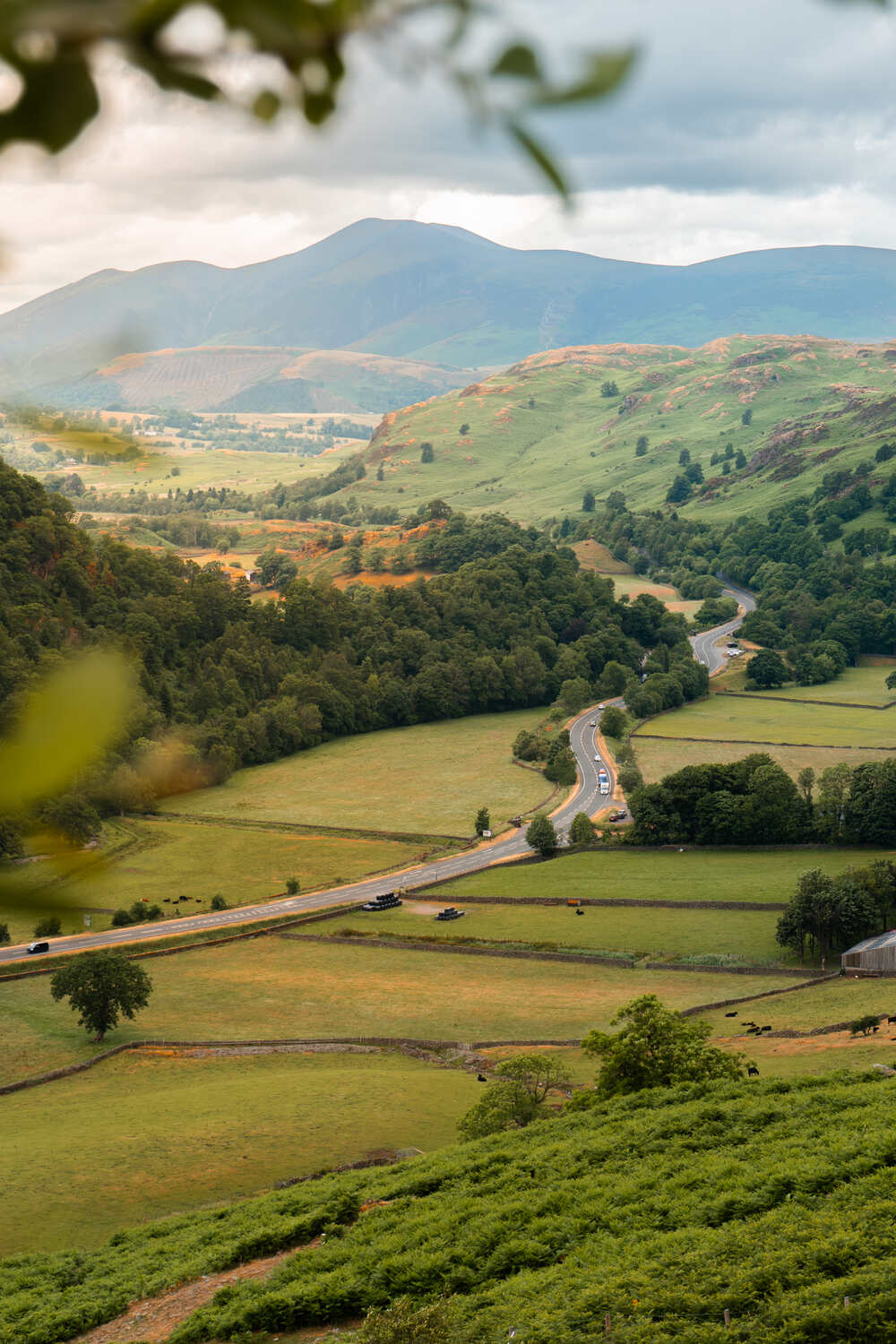
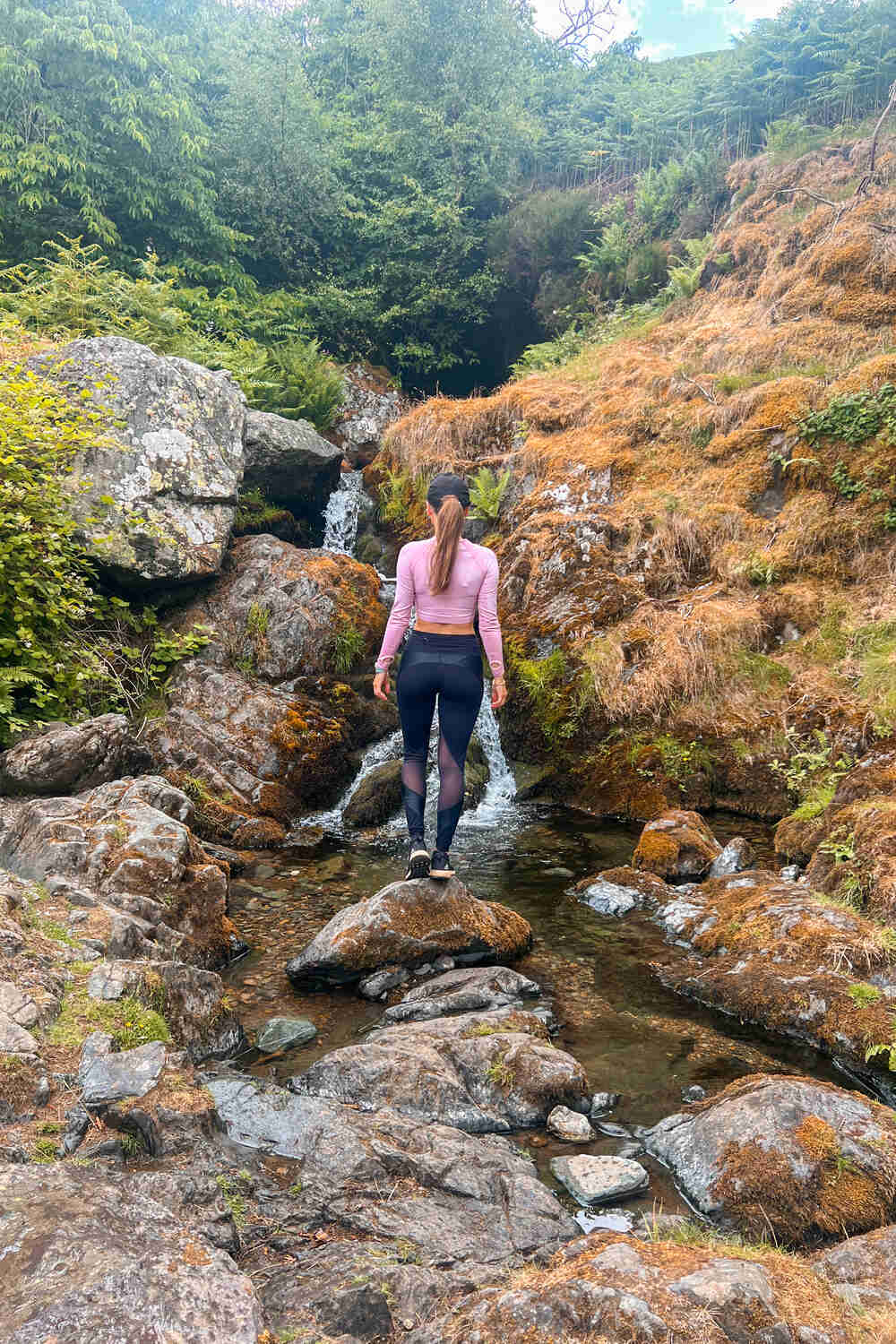
By coach: If you prefer coach travel, National Express offers services to various destinations in the Lake District, including Keswick, Windermere, and Grasmere.
Alternatively, Megabus connects London Victoria to Penrith, offering budget-friendly options.
By air: Flying may be the fastest option for international travellers. The nearest major airports are Manchester and Liverpool.
From these airports, you can rent a car, take a train, or use coach services to reach the Lake District.
Carlisle Lake District Airport is closer but caters to a limited number of flights, mainly domestic or from nearby international destinations.
By ferry: If you’re coming from Ireland or the Isle of Man, you can take a ferry to ports such as Heysham or Fleetwood and then travel onward by road or rail to the Lake District.
HOTEL GUIDE
20 best luxury hotels in the Lake District
From cosy countryside inns to luxury spa retreats, discover my pick of the best luxury hotels in the Lake District.
DESTINATION GUIDE
20 pretty Lake District towns & villages to visit
From the bustling market towns to the tranquil hamlets, discover my favourite Lake District villages and towns to visit.
Travelling around the Lake District can be a delightful experience, with its picturesque landscape and charming towns.
There are several modes of transport available for you to explore this beautiful region.
By car: I think that hiring a car (or using your own) is the best and most flexible option, offering the freedom to explore the various nooks and crannies of the Lake District at your own pace.
The Lake District has a comprehensive network of well-maintained roads connecting its towns and villages. Just be mindful of narrow lanes and keep an eye out for wandering sheep!
By bus: The region is well-connected by bus services, providing an affordable and eco-friendly alternative. The main bus operator is Stagecoach, offering regular services across the area.
The Explorer ticket provides unlimited day travel, making it an excellent option for those wanting to visit multiple locations in one day.
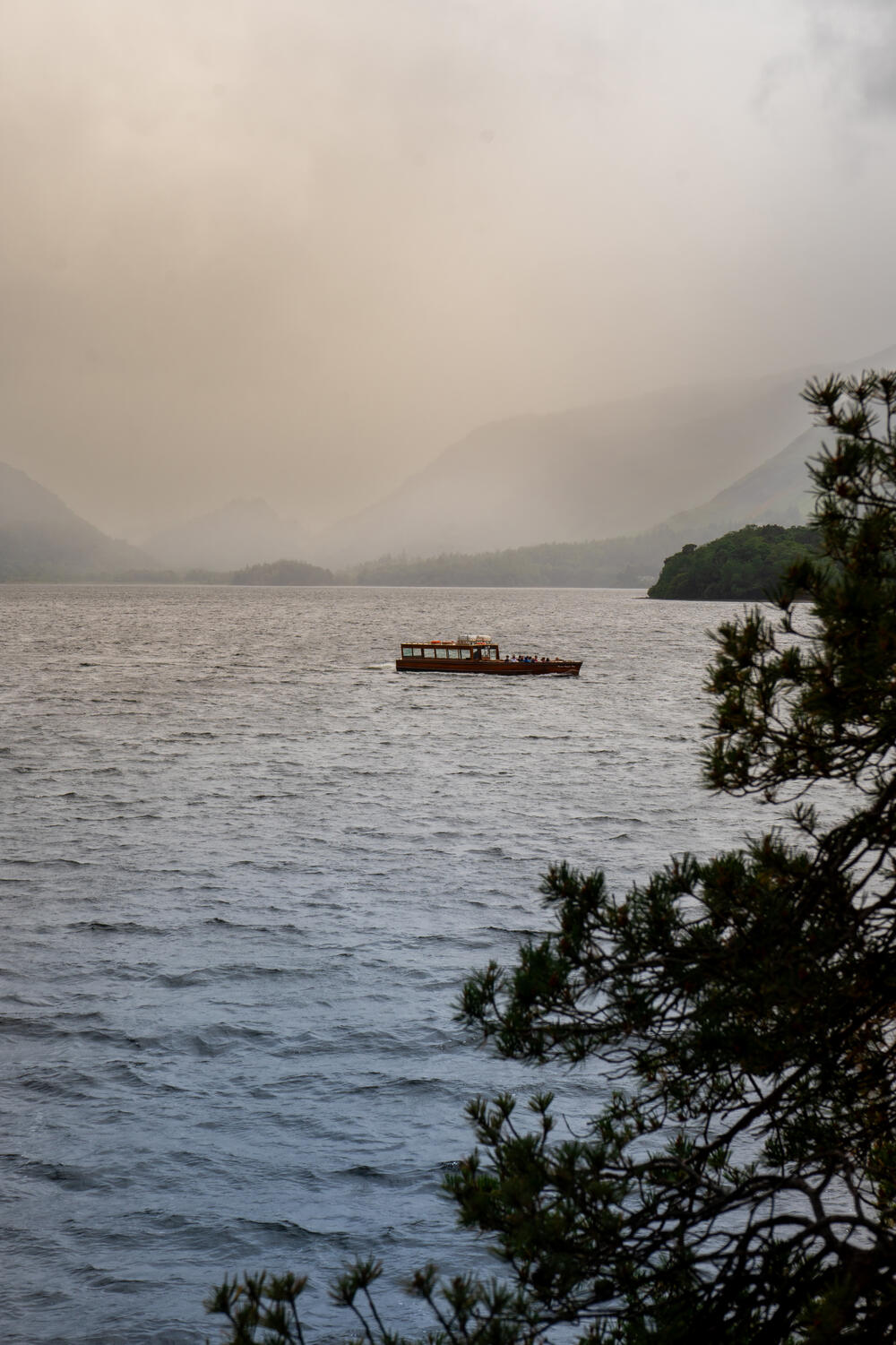
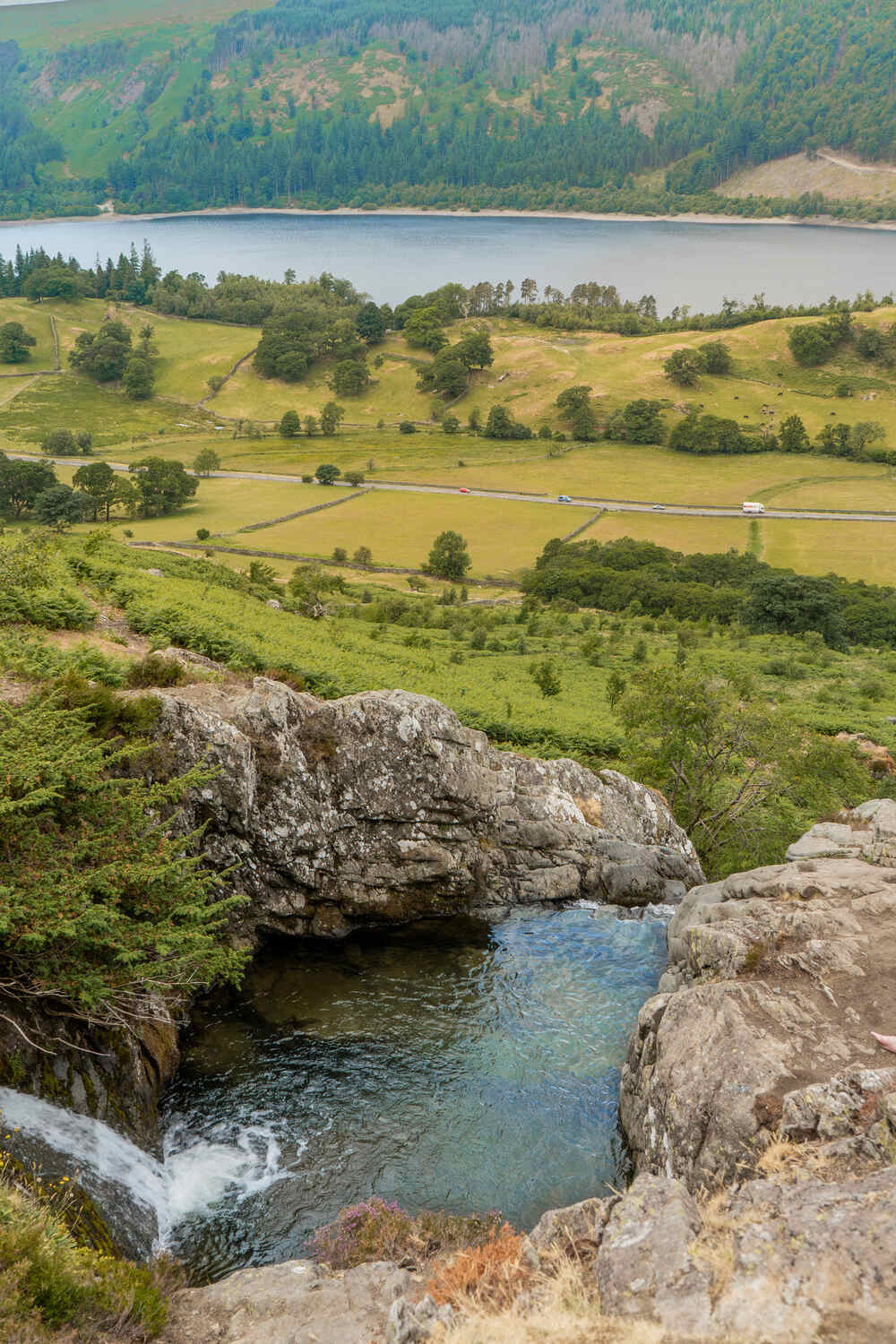
By train: While the train network in the Lake District is somewhat limited, it still offers scenic journeys and convenient connections to some key destinations.
The West Coast Main Line stops at Oxenholme Lake District station, offering easy access to Windermere and Kendal. From there, you can switch to local services to explore further afield.
By boat: To truly appreciate the beauty of the lakes, I’d recommend taking a leisurely cruise on one of the steamers or motor vessels that ply the waters.
Windermere Lake Cruises and Ullswater Steamers provide services on their respective lakes, offering hop-on-hop-off options and various routes to suit your preferences.
By bike: For the more active visitors, cycling is an excellent way to see the Lake District’s stunning landscape up close.
Many towns and villages have bike hire facilities, and there are a vast array of cycle trails to suit all abilities. Just remember to be prepared for challenging hills and variable weather conditions.
On foot: The Lake District is of course famous for its many breathtaking hikes. So lace up your walking boots and explore the magic of the Lake District on foot.
Summer may be the most popular season in the Lake District, but I can assure you that it offers incredible beauty and experiences year-round.
Spring
In the spring, you can experience the beauty of the Lake District as it awakens after the winter months. From March to May, the weather is generally mild, with daytime temperatures averaging around 9-12°C.
This is an excellent time for walking and exploring the countryside, as the wildflowers begin to bloom and the hillsides turn a vibrant green. Spring also sees fewer tourists than the summer months, providing a less-crowded experience.
SUMMER
The summer months (June to August) are the most popular time to visit the Lake District. With warm temperatures averaging 15-19°C and longer daylight hours, you can spend more of your day enjoying outdoor activities such as hiking, cycling, and watersports.
Be aware that the popularity of this season can lead to increased prices for accommodation and attractions. Summer is also prime time for local events and festivals, providing more entertainment opportunities during your stay.
AUTUMN
Autumn (September to November) in the Lake District presents a stunning display of colours with the changing foliage. Note that the weather can be cooler and more unpredictable, with temperatures ranging from 9-14°C.
The crowds of tourists dissipate during this time, creating a more peaceful experience, and accommodation prices start to decrease. Autumn is an ideal time to visit if you enjoy photography as the landscape provides a breathtaking backdrop.
WINTER
Winter (December to February) in the Lake District offers a unique experience, turning the landscape into a winter wonderland. With snow-capped mountains and frosty ground, the area becomes a calm and serene setting.
Temperatures can drop below 0°C, so be prepared for cold weather and potential travel disruptions. However, if you’re seeking tranquillity and the opportunity to appreciate the natural beauty of the area, winter is an excellent choice for your visit.
One of my biggest frustrations when visiting the Lake District was never having enough change for parking! When I googled whether the ‘pay and display’ machines in the Lake District accept card, the answer was yes, they do. This is a lie!
Although some of them have the capacity to accept card, most of the time it’s not working due to technical difficulties. While there is the option to pay by phone or on the app, there is never any signal pretty much anywhere in the Lake District.
Bear in mind that the minimum payment is usually around £4 or £5 – so you need a lot of change. I’d recommend taking out a load of change before visiting the Lake District so you can be fully prepared!
The weather in the Lake District can be unpredictable. Even in the summer months, you can have all four seasons in one day.
If it’s sunny when you start your hike, that does not mean it will be sunny by the end! So I’d advise packing accordingly, always bringing layers and a waterproof jacket.
Good walking boots are also recommended if you plan on doing hikes, as the terrain is often rough and rocky.
Mobile coverage can be spotty in the Lake District, making it almost impossible to rely on digital maps. So I’d say taht a physical map is a valuable resource when planning your route and exploring nature trails.
Ordnance Survey maps provide detailed information, including walking paths, roads, and local attractions. While navigating, it’s essential to keep an eye on your surroundings and pay attention to signs, as some trails may be less well-marked.
If you do forget to bring a map, I’d recommend pre-loading your route into Google Maps when you have internet. Your GPS will work regardless of signal and internet, so you’ll at least be able to see if you’re on the right track.
The Lake District is a vast area with numerous attractions, but it’s essential not to overbook your schedule. Instead, focus on a few key destinations that interest you most.
This approach not only reduces travel time but also allows you to fully appreciate the beauty of each location.
Remember to balance between famous landmarks and lesser-known gems, and don’t forget to allocate time for leisurely walks, local cuisine, and relaxation.
You can always return to the Lake District in the future to explore more (and I recommend that you do)!
TRAVEL GUIDE
15 epic waterfalls in the Lake District
From the calming cascades of Scale Force to the thundering torrents of Aira Force, discover my pick of the best waterfalls in the Lake District.
FOOD GUIDE
20 Michelin restaurants in the Lake District
In this ultimate foodie guide to the best restaurants in the Lake District, I share my top picks of Michelin-star restaurants in the region.
The length of your stay in the Lake District depends on your interests and time available.
A weekend getaway can offer a taste of the region, but I’d say that one week is ideal to fully enjoy the scenery, outdoor activities, and charming towns.
You could easily spend several weeks in the Lake District and still not see everything. But it’s a place you can return to time and time again.
Yes, I think the Lake District is an excellent destination for solo travellers – my most recent trip was a solo adventure and I loved every minute!
Everyone was incredibly friendly and I always felt very safe. I’d say your biggest concern as a solo traveller in the Lake District is the weather, as it can turn so quickly.
If you’re going for a hike or other outdoor activity, always let someone know your planned route – if you’re staying at a hotel, perhaps let them know your plans and when you hope to return.
As there is no signal in most of the Lake District, you won’t be able to call for help if something goes wrong – for example, if you sprain an ankle on a hike.
It’s therefore good practice to keep someone in the loop, so they can check whether you get back around the expected time.
While the Lake District has a reputation for attracting a more affluent crowd, there are options for travellers on any budget.
Accommodation ranges from camping to five-star luxury, and food options range from local cafés to Michelin-stars.
Believe me when I say that the Lake District is a foodie’s paradise and boasts an impressive 10 Michelin-starred restaurants at the time of writing.
These exceptional dining establishments include:
L’Enclume: Located in the village of Cartmel and featuring innovative modern British cuisine.
Rogan & Co: Also in Cartmel and offering a slightly less formal alternative to L’Enclume, but with similar culinary standards.
SOURCE at the Gilpin Hotel: Located in Windermere and combines traditional British ingredients with Asian flavours and techniques.
The Forest Side in Grasmere: Focuses on locally sourced produce, presenting the best of Cumbrian fare.
For more foodie inspiration, read my guide to the best afternoon spots in the Lake District.
The Lake District boasts numerous breathtaking waterfalls that I’m sure will leave you in awe. One of the most remarkable waterfalls is Aira Force, nestled within Ullswater Valley.
With an impressive 65-foot drop, the scenic walk through the surrounding woodland is a must-see on your visit.
Another grand presence is the Stock Ghyll Force, a simple 5-minute walk from the centre of the charming village of Ambleside. At 70 feet high, the dramatic drop of water caps off a relaxing stroll through quiet woods.
My personal favourite is Whorneyside Force, which is also of epic proportions. It’s a bit of a hike to get to but well worth it!
Read my guide to the best waterfalls in the Lake District.
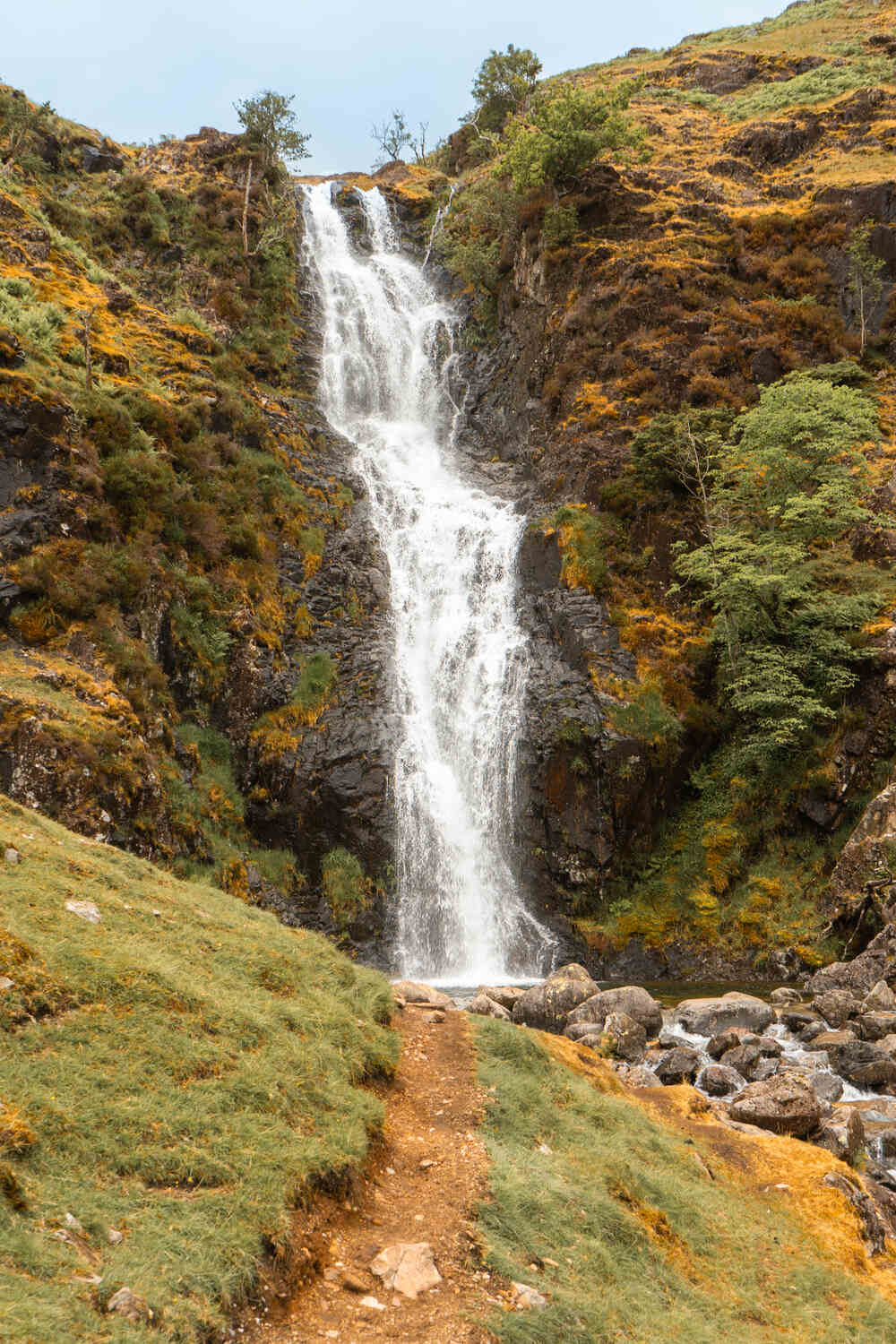
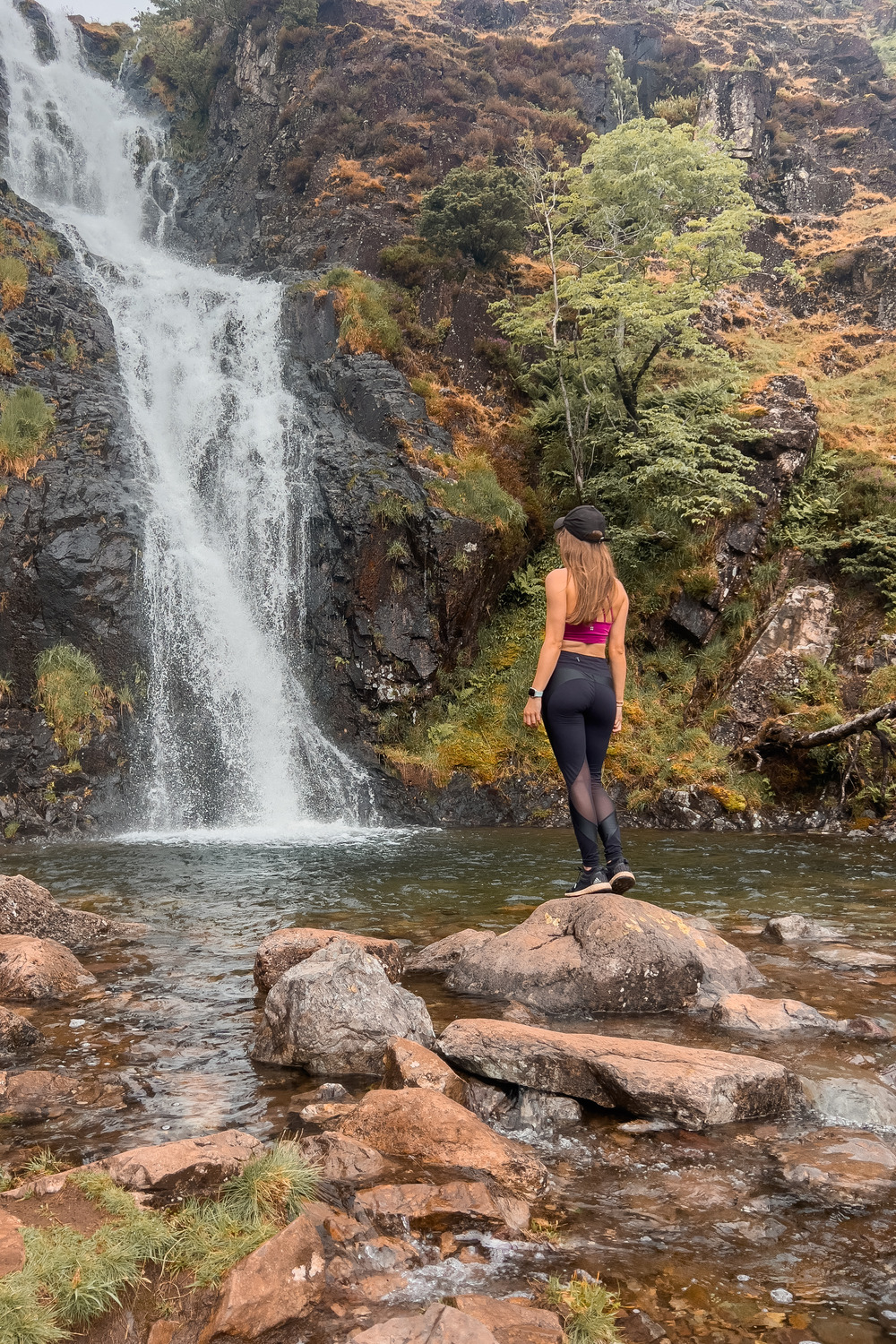
The Lake District is sprinkled with quaint villages that champion picturesque views and idyllic atmospheres.
Grasmere is an enchanting village where you can visit the former home of well-known poet William Wordsworth. Enjoy its traditional tea rooms and shop for the famed Grasmere Gingerbread.
Hawkshead is a mediaeval village steeped in history and charm, with its cobbled streets and unique architecture. Visit Beatrix Potter’s beloved Gallery, showcasing her original illustrations and artwork.
Discover more of the prettiest Lake District villages in my guide.
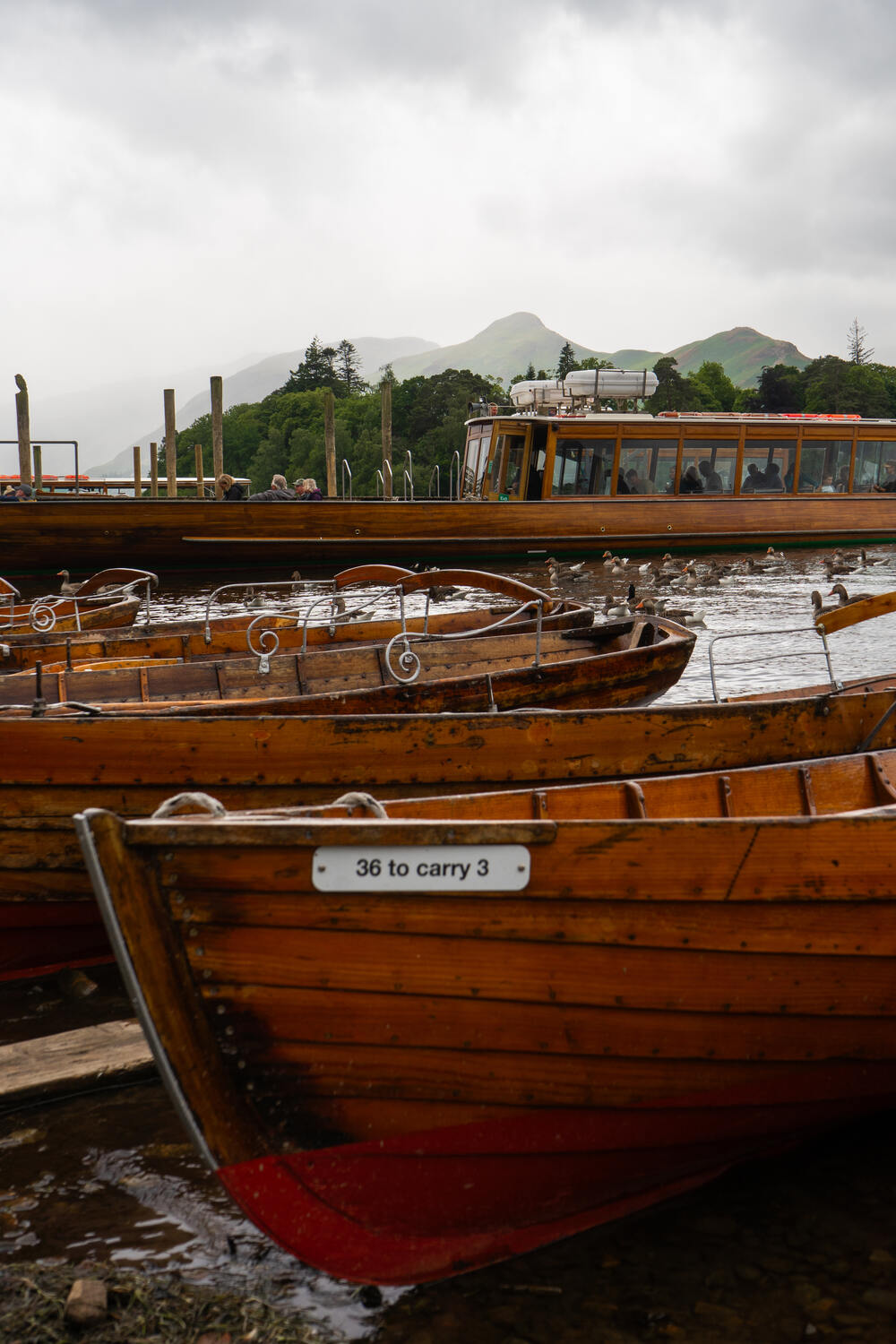
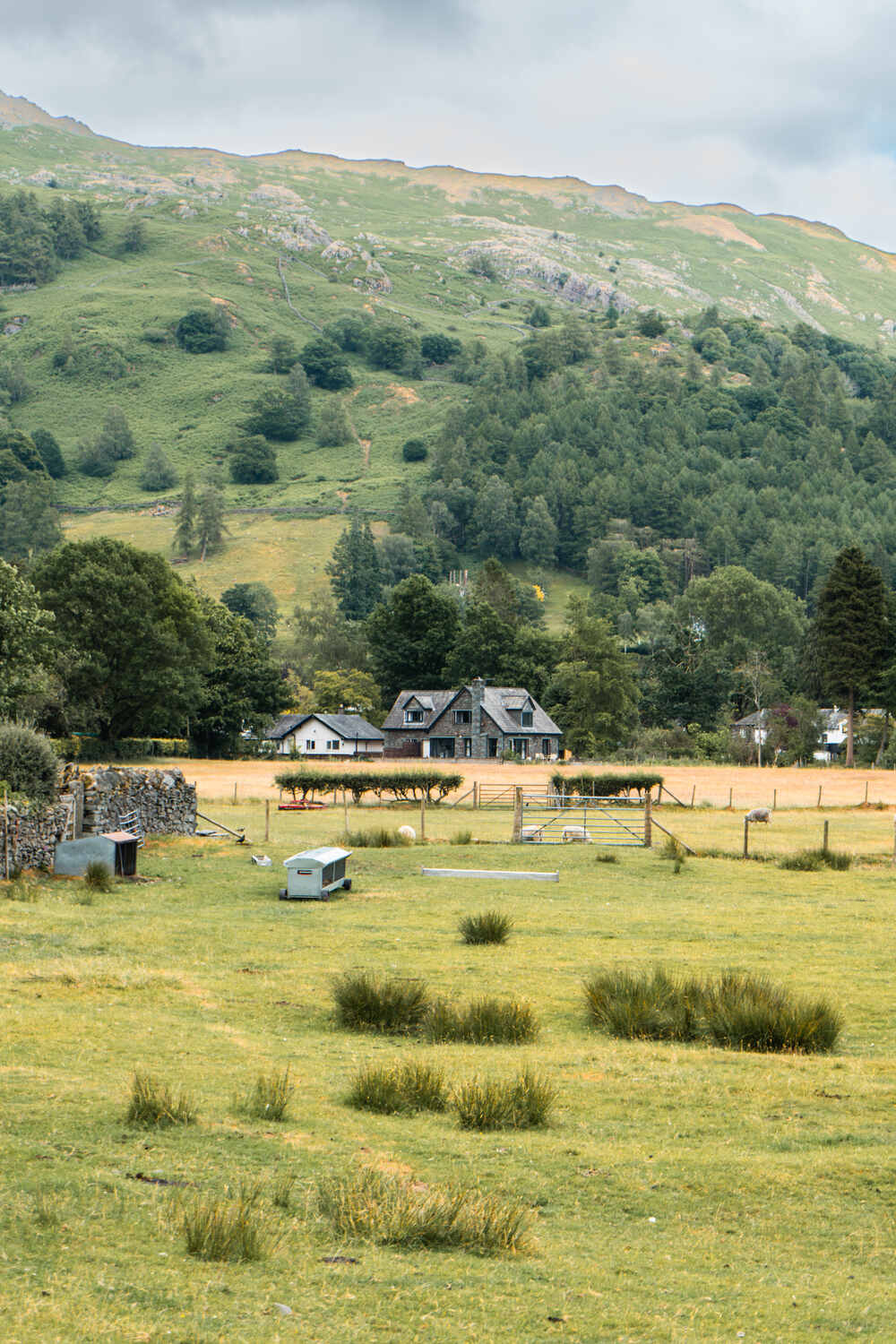
It wouldn’t be the Lake District without its iconic lakes. Windermere is the largest lake in England and is perfect for various water sports or leisurely cruises on traditional steamers. Take in the stunning surroundings, including historic houses and gardens.
Derwentwater lies at the heart of the Lake District, a perfect destination for watersports enthusiasts, walkers, and wildlife enthusiasts alike. Enjoy a blissful day kayaking, embark on a tranquil cruise or lose yourself to the breathtaking views on one of the many walking trails.
Want to save up to 25% on hotels?
Subscribe to the Pocket Wanderings newsletter and get immediate access to my guide on how to save money on flights and hotels. Our weekly emails are filled with adventure inspiration, insider travel tips and exclusive discounts.
Want up to 25% off hotels?
Subscribe to my newsletter and get immediate access to my guide on how to save money on flights and hotels. Our weekly emails are filled with adventure inspiration, insider travel tips and exclusive discounts.
